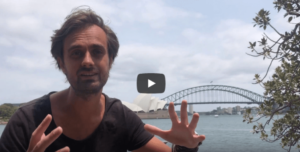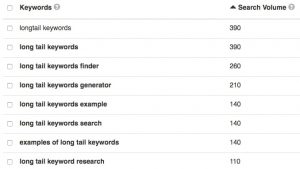Get found today on the right keywords with a keyword research SEO
A good keyword research is the basis of your website and is part of SEO optimization. For Mr SEO agency Sydney, keyword research an essential part of the SEO strategy. During our keyword research we investigate what the opportunities are, what we need to optimize and provide insights what competitors are doing. By doing a keyword research properly, you will find the most relevant keywords, which attract the right target group to your website or webshop. A keyword search is essential if you want to be at the top of Google or want to start your Google Ads campaign.
At this page we will provide some examples, more information about the type of keywords and how we as Mr SEO agency Sydney can help you. With a keyword research you also look at the difficulty level of a keyword. If you sell pizzas and you want to be found on “Pizza Sydney”, we can already say that it will be quite a struggle! Later at this page we will zoom in on how you can score well and tackle high competitive keywords.
Whatever the reason is for your online strategy, it is always important to assess the needs of your customers. By matching your keywords to your target audience, competition and product / service, you can easily determine whether it is useful to invest in that keyword or search for other relevant keywords. Doing a keyword research is very important for the success of all your online activities. This keyword research serves as the foundation for your online strategy and all your further online activities. The keyword research at Mr SEO agency Sydney is structured in the following steps:

Step 1: We always start with a ‘baseline measurement’ current situation check
When we get you as a new client, you obviously already have some keywords ranking at your website / webshop. We therefore first look at the current situation of all keywords. Which keywords are already ranking well and where can we continue to build? We normally come across qualitative keywords in the title and the paragraph headings also called an H1. We will make a nice overview of this so that we can measure where we are now and where we want to grow. In this way, we can calculate the ROI (return on investment) and be transparent how much our SEO services have delivered. From this basis we will continue to build nicely and we will include the “baseline measurement” in our SEO strategy.
Step 2: The Competitor analysis
When we have an overview of the current situation, we will look further at the competitors. What is our position in the market, where are the competitors focused at. In particular, a “Gap Analysis” as the name suggests, where are the ‘gaps’. So we see keywords from competitors that we don’t have yet. You can also use this for link building, where do the competitors get links from which we do not yet have, so definitely a valuable step! We use all our fancy keyword analysis tools for this step.
What are longtail keywords?
Let’s start with the longtail keyword meaning: These are broader keywords to set up for SEO. This means you have fewer competitors and a lower search volume. The big advantage is to get higher in Google on these broad keywords. As an example we come back to our pizza example. You can use long-tail keywords such as: “authentic pizza”, “wood oven pizza Sydney”, “Italian pizza” or link your neighbourhood to keywords. You then get; “Mosman pizza restaurant Sydney” or “Pizza delivery Paddington” So you are going to build around your product / service and claim your “Niche”. You are the best / cheapest etc. in your city, if there are many competitors in the city then you claim your neighbourhood. This way you can claim your market with an SEO strategy in combination with a keyword research.
What are Latent Semantic Indexing (LSI) keywords?
 This will become more important in the coming years due to the new Google algorithms. People no longer search for “Hamburger Sydney” but “what is the best burger bar in Manly” etc. A synonym for your product becomes important within SEO, so people search for a Burger or Hamburger. As a result, we always create an LSI keyword overview. We must therefore also include this within the content strategy. You create a FAQ this way with keywords like, What, Why, how…
This will become more important in the coming years due to the new Google algorithms. People no longer search for “Hamburger Sydney” but “what is the best burger bar in Manly” etc. A synonym for your product becomes important within SEO, so people search for a Burger or Hamburger. As a result, we always create an LSI keyword overview. We must therefore also include this within the content strategy. You create a FAQ this way with keywords like, What, Why, how…
Step 3: Google also gives suggestions
We continue with our keyword research step-by-step plan. We have already been able to make nice overviews and we are now looking at the suggestions of Google and Bing. Google is also happy to help with your keyword research. Via the Google Ads Keywordplanner (part of the Google advertising program), we can request keyword ideas based on other keywords. In addition, the Google Ads Keywordplanner also offers the option to select keywords based on your website address (or the website address of another). In this way we get broader ideas that we can build on. Google has the data that people are looking for, so we want to get as much data as possible.
Step 4: Brainstorming and broadening the scope
Based on the retrieved keywords and data from Google, Now we will complete the keyword research through an extensive brainstorming session. Try to mention the following elements:
- Products and description.
- Product USP’s of the target group.
- Product names, company names, product models / types etc.
- Related products / topics.
- Combine keywords with place names, regions and provinces.
- Also consider colors, sizes and prices
Additionally, it is always useful to have singular and plural words in the content. We can then combine all these keywords via Merge Words. This combines all these different attributes into various keywords. So we also have a nice overview of all combination keywords. Then we look at what a great search volume is.
Step 5: Analyse and implementation
When we have looked at all the options, we can make some conclusions from this. The longtail keywords usually have low search volumes, but we can score quickly. The higher search volumes we need more time and become a long-term goal. After this we start with the “customer journey”, in other words: mapping out the purchasing process. What steps do your potential customer take before he actually purchases a product or service? This way, all needs that your customer has are mapped. This is especially important in a webshop / E-commerce. From orientation to after sales, all steps are carefully mapped out. For example, it is extremely important that you are visible when the customer is busy with the orientation.
You can do this by being found well in Google. We investigate exactly all steps that are taken for the purchase of a product, this way all needs are mapped. This is done in a customer journey, in which all channels and needs are mapped. This shows which channels or touch points are missing. Mr SEO agency ensures that your website / webshop is and remains visible to the customer at all stages of the purchasing process.
